-
 Bitcoin
Bitcoin $116900
0.00% -
 Ethereum
Ethereum $4280
5.48% -
 XRP
XRP $3.265
-1.45% -
 Tether USDt
Tether USDt $1.000
-0.01% -
 BNB
BNB $807.0
1.41% -
 Solana
Solana $183.1
2.93% -
 USDC
USDC $0.9999
0.00% -
 Dogecoin
Dogecoin $0.2440
6.50% -
 TRON
TRON $0.3357
-0.88% -
 Cardano
Cardano $0.8178
2.63% -
 Hyperliquid
Hyperliquid $44.13
7.45% -
 Chainlink
Chainlink $21.39
9.09% -
 Stellar
Stellar $0.4524
-0.84% -
 Sui
Sui $3.957
2.13% -
 Bitcoin Cash
Bitcoin Cash $572.7
-2.54% -
 Hedera
Hedera $0.2671
1.54% -
 Avalanche
Avalanche $24.77
4.17% -
 Ethena USDe
Ethena USDe $1.001
0.02% -
 Litecoin
Litecoin $122.3
-1.94% -
 Toncoin
Toncoin $3.432
2.26% -
 UNUS SED LEO
UNUS SED LEO $9.007
0.49% -
 Shiba Inu
Shiba Inu $0.00001396
5.26% -
 Uniswap
Uniswap $11.09
1.64% -
 Polkadot
Polkadot $4.155
4.57% -
 Dai
Dai $1.000
0.00% -
 Pepe
Pepe $0.00001253
5.11% -
 Cronos
Cronos $0.1588
2.67% -
 Bitget Token
Bitget Token $4.512
0.05% -
 Monero
Monero $275.0
0.64% -
 Ethena
Ethena $0.7527
15.10%
What is the difference between USDT and BTC? Which is more stable?
USDT, a stablecoin pegged to the USD, offers stability, while BTC, the first cryptocurrency, is volatile but seen as digital gold. Choose based on your risk tolerance.
May 11, 2025 at 07:28 pm
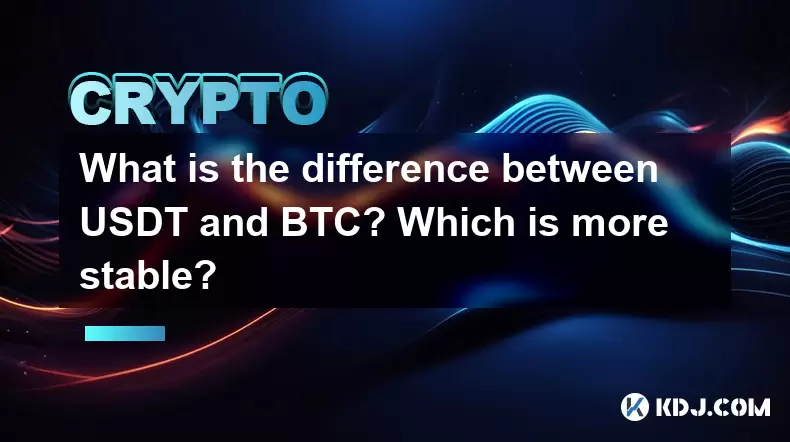
USDT and BTC are two prominent cryptocurrencies that serve different purposes within the digital currency ecosystem. Understanding their differences, particularly in terms of stability, is crucial for anyone navigating the crypto market.
What is USDT?
USDT, also known as Tether, is a type of cryptocurrency known as a stablecoin. Stablecoins are designed to minimize the volatility typically associated with other cryptocurrencies like Bitcoin. USDT aims to maintain a stable value by pegging it to the value of the US dollar. This means that, theoretically, 1 USDT should always be equivalent to 1 USD.
The primary mechanism through which USDT maintains its peg is by holding reserves of US dollars or equivalent assets. Tether Limited, the company behind USDT, claims to have enough reserves to back every USDT in circulation. This reserve backing is intended to ensure that users can redeem their USDT for USD at any time, thus maintaining the stable value.
What is BTC?
BTC, or Bitcoin, is the first and most well-known cryptocurrency. Unlike USDT, Bitcoin is not pegged to any fiat currency and operates on a decentralized network. Its value is determined purely by market forces, making it subject to significant price fluctuations. Bitcoin's primary use is as a store of value and a medium of exchange, often referred to as "digital gold."
Bitcoin's value can be influenced by various factors, including market demand, regulatory news, technological developments, and macroeconomic trends. This volatility is a double-edged sword: it can lead to significant gains for investors but also substantial losses.
Stability Comparison: USDT vs. BTC
When it comes to stability, USDT is designed to be more stable than BTC. The primary reason for this is its peg to the US dollar. USDT's value should remain constant at 1 USD, making it an attractive option for those looking to avoid the volatility of other cryptocurrencies.
In contrast, BTC's value can fluctuate wildly. For instance, in a single day, Bitcoin's price might swing by several percentage points, whereas USDT's price typically remains within a very narrow band around its $1 peg. This stability makes USDT a preferred choice for traders who want to move funds between different cryptocurrencies without being exposed to market volatility.
Use Cases: USDT vs. BTC
USDT is often used as a safe haven within the crypto market. Traders might convert their holdings into USDT during times of high market volatility to protect their investments. Additionally, USDT is widely used in trading pairs on cryptocurrency exchanges, allowing users to trade between different cryptocurrencies without converting back to fiat currency.
On the other hand, BTC is used for a variety of purposes. It serves as a long-term investment for many, with some viewing it as a hedge against inflation and economic instability. Bitcoin is also used for transactions, although its use as a day-to-day currency is limited due to its volatility and transaction fees.
Risks and Considerations
While USDT is designed to be stable, it is not without risks. There have been concerns about the transparency and adequacy of Tether Limited's reserves. If Tether were unable to maintain its peg due to insufficient reserves, USDT's value could plummet, leading to significant losses for holders.
BTC, while more volatile, is backed by a robust and transparent blockchain network. Its decentralized nature means that no single entity controls it, which can be seen as both a strength and a weakness. The lack of a central authority can lead to slower transaction times and higher fees during periods of high demand.
How to Acquire USDT and BTC
Acquiring USDT and BTC involves similar processes, but the choice of platform can vary based on your location and preferences. Here's how you can get started:
- Choose a Cryptocurrency Exchange: Popular exchanges include Binance, Coinbase, and Kraken. Ensure the exchange supports trading in your region.
- Create an Account: Sign up with your email address and complete the necessary KYC (Know Your Customer) verification.
- Deposit Funds: You can deposit fiat currency (like USD) or another cryptocurrency to your exchange account.
- Buy USDT or BTC: Navigate to the trading section of the exchange and place an order to buy USDT or BTC. For USDT, you might buy it directly with USD or trade another cryptocurrency for it. For BTC, you can buy it with fiat or trade other cryptocurrencies.
Trading and Holding Strategies
When deciding whether to hold USDT or BTC, consider your investment goals and risk tolerance. If you're looking for stability and a safe haven during market downturns, USDT might be the better choice. However, if you're willing to take on more risk for the potential of higher returns, BTC could be more suitable.
For trading, USDT can be used as a tool to quickly move between different cryptocurrencies without converting back to fiat. BTC, on the other hand, can be traded for other cryptocurrencies or held as part of a diversified investment portfolio.
Frequently Asked Questions
Q: Can USDT lose its peg to the US dollar?
A: Yes, USDT can lose its peg if Tether Limited is unable to maintain sufficient reserves to back every USDT in circulation. This could happen due to regulatory issues, financial mismanagement, or other unforeseen events.
Q: Is it possible to use USDT for everyday transactions?
A: While technically possible, USDT is not commonly used for everyday transactions. Its primary use is within the cryptocurrency trading ecosystem. For everyday transactions, other stablecoins or cryptocurrencies with faster transaction times and lower fees might be more suitable.
Q: How does the mining process for BTC work?
A: Bitcoin mining involves solving complex mathematical problems to validate transactions and add them to the blockchain. Miners compete to solve these problems, and the first to do so is rewarded with newly minted BTC. This process requires significant computational power and energy.
Q: Are there any alternatives to USDT and BTC?
A: Yes, there are numerous alternatives. For stablecoins, options include USDC, DAI, and BUSD. For cryptocurrencies similar to BTC, alternatives include Ethereum (ETH), Litecoin (LTC), and Bitcoin Cash (BCH). Each has its own unique features and use cases within the crypto ecosystem.
Disclaimer:info@kdj.com
The information provided is not trading advice. kdj.com does not assume any responsibility for any investments made based on the information provided in this article. Cryptocurrencies are highly volatile and it is highly recommended that you invest with caution after thorough research!
If you believe that the content used on this website infringes your copyright, please contact us immediately (info@kdj.com) and we will delete it promptly.
- Trump, Nasdaq, and Token Treasury: WLFI's $1.5B Gambit
- 2025-08-10 06:50:12
- Trump, Nasdaq, and Token Treasury: WLFI's $1.5B Play
- 2025-08-10 06:30:11
- Coinbase, DEX Trading, and Base Network: A New Era for Crypto?
- 2025-08-10 06:30:11
- Block Inc., Bitcoin, and Mining Chips: Reshaping Digital Finance, New York Style
- 2025-08-10 06:50:12
- Stablecoin Surge Ignites Altcoin Investment Hunt: What's Hot Now?
- 2025-08-10 06:55:16
- Penny Crypto Dreams: Can XRP Reach $10,000? A Look at LILPEPE and the Meme Coin Mania
- 2025-08-10 04:50:11
Related knowledge

How to choose a reliable USDT exchange service provider? How to identify?
Jun 12,2025 at 03:15pm
Understanding the Role of USDT in Cryptocurrency TradingUSDT (Tether) is one of the most widely used stablecoins in the cryptocurrency market. It is d...
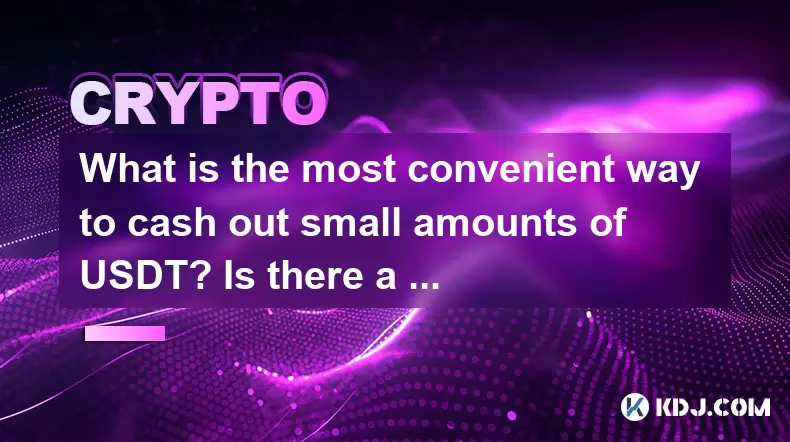
What is the most convenient way to cash out small amounts of USDT? Is there a shortcut?
Jun 11,2025 at 11:00pm
Understanding the Need to Cash Out Small USDT AmountsCashing out small amounts of USDT can be a challenge for many crypto users. Traditional methods o...
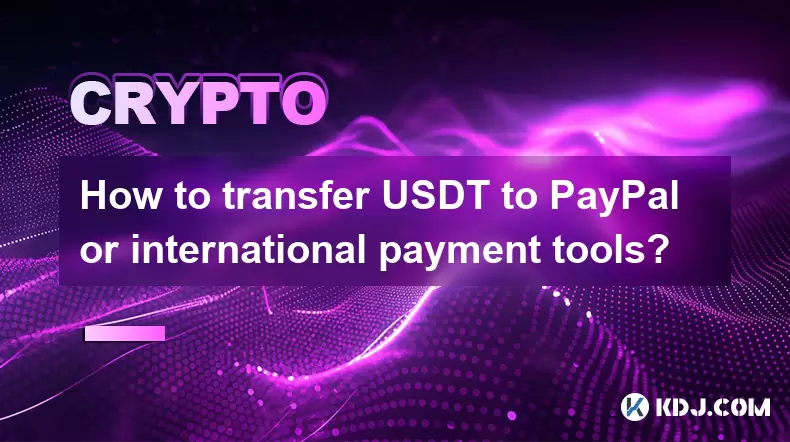
How to transfer USDT to PayPal or international payment tools?
Jun 15,2025 at 05:28am
Understanding the Basics of USDT and PayPal IntegrationUSDT (Tether) is a stablecoin pegged to the US dollar, offering blockchain-based value transfer...
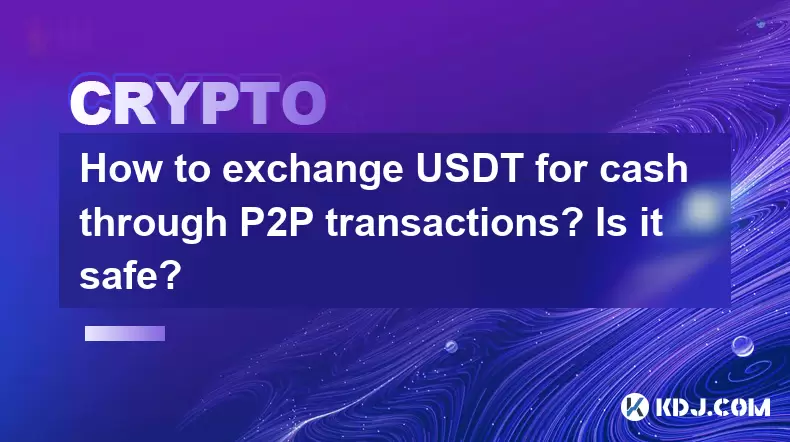
How to exchange USDT for cash through P2P transactions? Is it safe?
Jun 18,2025 at 07:56am
Understanding USDT and P2P TransactionsTether (USDT) is a stablecoin pegged to the value of the US dollar, making it a popular choice for users who wa...
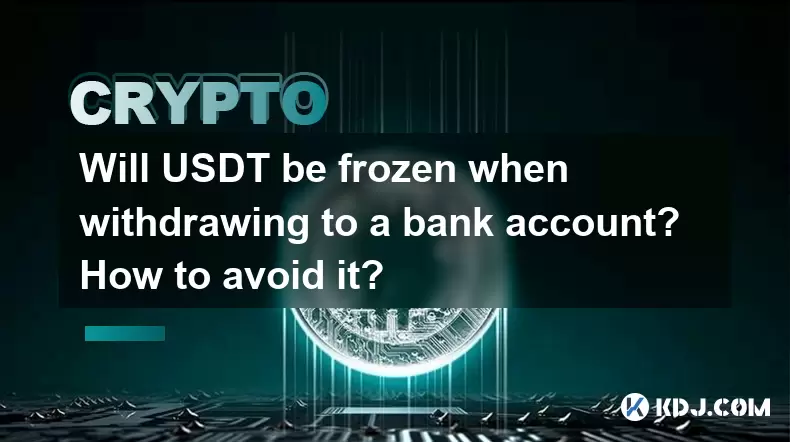
Will USDT be frozen when withdrawing to a bank account? How to avoid it?
Jun 15,2025 at 10:03am
Understanding USDT Withdrawals and Bank Account Freezing RisksWhen users decide to withdraw USDT (Tether) to a bank account, one of the most common co...

How to avoid risks when exchanging USDT for cash? What are the pitfalls?
Jun 11,2025 at 08:14pm
Understanding the Risks of Exchanging USDT for CashWhen exchanging USDT (Tether) for cash, users must be aware of the potential risks involved. As a s...

How to choose a reliable USDT exchange service provider? How to identify?
Jun 12,2025 at 03:15pm
Understanding the Role of USDT in Cryptocurrency TradingUSDT (Tether) is one of the most widely used stablecoins in the cryptocurrency market. It is d...

What is the most convenient way to cash out small amounts of USDT? Is there a shortcut?
Jun 11,2025 at 11:00pm
Understanding the Need to Cash Out Small USDT AmountsCashing out small amounts of USDT can be a challenge for many crypto users. Traditional methods o...

How to transfer USDT to PayPal or international payment tools?
Jun 15,2025 at 05:28am
Understanding the Basics of USDT and PayPal IntegrationUSDT (Tether) is a stablecoin pegged to the US dollar, offering blockchain-based value transfer...

How to exchange USDT for cash through P2P transactions? Is it safe?
Jun 18,2025 at 07:56am
Understanding USDT and P2P TransactionsTether (USDT) is a stablecoin pegged to the value of the US dollar, making it a popular choice for users who wa...

Will USDT be frozen when withdrawing to a bank account? How to avoid it?
Jun 15,2025 at 10:03am
Understanding USDT Withdrawals and Bank Account Freezing RisksWhen users decide to withdraw USDT (Tether) to a bank account, one of the most common co...

How to avoid risks when exchanging USDT for cash? What are the pitfalls?
Jun 11,2025 at 08:14pm
Understanding the Risks of Exchanging USDT for CashWhen exchanging USDT (Tether) for cash, users must be aware of the potential risks involved. As a s...
See all articles

























































































